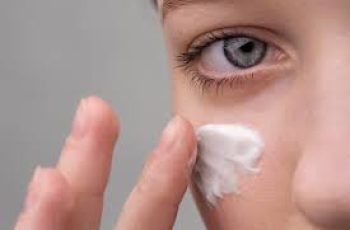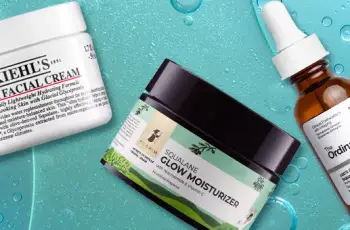
Fatty Acids in Skin Care: What They Do, Why They Matter, and How to Choose the Right Ones for Your Skin
If you’ve been diving into skincare science, you’ve likely heard about fatty acids. These powerful ingredients are essential to skin barrier health, hydration, and even pigmentation control.
But not all fatty acids are the same.
This guide explains the types of fatty acids, how they impact your skin, and how to choose moisturizers and oils with the right fatty acids for your skin type.
What Are Fatty Acids?
Fatty acids are molecules made of carbon, hydrogen, and oxygen. They have two parts—a hydrophilic “head” and a hydrophobic “tail.” This structure makes them essential for forming skin lipids.
They are natural components of oils and fats, found in both plants and animals. In skin care, fatty acids play a central role in building and repairing the skin’s barrier.
Why Are Fatty Acids Important in Skincare?
Fatty acids influence many processes within your skin, including:
Skin hydration and barrier repair
Regulation of inflammation
Cell membrane fluidity
Desquamation (natural exfoliation)
Immune system function
Pigmentation and even mitochondrial energy production
They also help support the skin’s microbiome—essential for conditions like acne, rosacea, and eczema.
Types of Fatty Acids in Skincare
Fatty acids come in two primary forms: saturated and unsaturated. Each works differently in your skincare routine.
1. Saturated Fatty Acids
These have straight tails and no double bonds. Their shape allows them to pack tightly together in the skin, forming a strong barrier.
Best for: Barrier repair and dry skin
Examples: Stearic acid, palmitic acid, myristic acid
Found in: Shea butter, cocoa butter, coconut oil, tallow
Note: Some, like lauric and myristic acid, can clog pores
2. Unsaturated Fatty Acids
These have curved tails due to double bonds, so they don’t pack as tightly. This helps increase absorption of skincare ingredients.
Best for: Pigmentation, inflammation, acne-prone skin
Examples: Linoleic acid, oleic acid, alpha-linolenic acid
Found in: Argan oil, sunflower oil, grape seed oil, borage seed oil
Essential Fatty Acids (EFAs)
EFAs cannot be made by the body and must come from your diet or skincare. The two major types are:
Omega-3s (like EPA and DHA)
Omega-6s (like linoleic acid)
These support skin function, balance the microbiome, and promote cell health.
Benefits of Fatty Acids for Skin
Fatty acids are more than just moisturizers—they provide specific, science-backed benefits:
Hydration: Help lock in water by strengthening the lipid barrier
Microbiome support: Encourage a healthy balance of skin bacteria
Calm inflammation: Especially helpful in eczema, rosacea, and acne
Enhance product penetration: Some help other ingredients absorb better
Improve pigmentation: Certain fatty acids reduce melanin production
Combat oxidative stress: Especially true for omega-3 fatty acids
How Fatty Acids Affect Skin Barrier Repair
The skin barrier is like a brick wall. The “bricks” are skin cells and the “mortar” is a mix of ceramides, cholesterol, and fatty acids.
To effectively rebuild this barrier, a moisturizer must include the right balance of these components.
Saturated fatty acids (like stearic acid) work best here, because their straight tails help form strong lipid layers.
Fatty Acids and Skin Conditions
1. Acne and Oily Skin
Use non-comedogenic unsaturated fatty acids like linoleic acid.
Avoid fatty acids like lauric acid unless formulated carefully.
Lauric acid can kill acne-causing bacteria but may clog pores.
Avoid saturated fatty acids with short chains (C8 to C14).
2. Hyperpigmentation and Melasma
Unsaturated fatty acids reduce melanin production and lighten skin.
Avoid moisturizers with saturated fatty acids if treating dark spots.
Oleic and linoleic acids are especially good for uneven tone.
3. Sensitive or Inflamed Skin (Rosacea, Eczema)
Polyunsaturated fatty acids like linoleic acid reduce inflammation.
EPA and DHA (omega-3s) decrease inflammatory cell activity.
Avoid harsh acids or fragrances that can disrupt lipid balance.
Saturated vs. Unsaturated Fatty Acids: Quick Comparison
Feature Saturated Fatty Acids Unsaturated Fatty Acids
Tail Shape Straight Curved (due to double bonds)
Barrier Repair Excellent Moderate
Comedogenic Risk Higher (short chain) Lower
Skin Lightening May increase pigment Helps reduce pigmentation
Best For Dry, damaged skin Oily, inflamed, pigmented skin
How to Identify Fatty Acids on Skincare Labels
Fatty acids may not be listed by their chemical names. Here’s how to find them:
Stearic acid may appear as glyceryl stearate or octadecanoic acid.
Palmitic acid might be glyceryl palmitate.
Look for ingredients like shea butter, cocoa butter, or argan oil to find fatty acids naturally.
Anything ending in “-ate” often indicates a fatty acid ester.
Check for these when choosing a product based on your skin type.
Best Fatty Acids for Each Skin Type
To select the right fatty acid moisturizer, consider your skin type and specific concerns:
Dry + Pigmented Skin (e.g. Baumann Types DRPT, DSPT)
Use: Unsaturated fatty acids (linoleic, oleic)
Avoid: Saturated fatty acids that may darken pigment
Oily + Acne-Prone Skin
Use: Linoleic acid for hydration without clogging pores
Avoid: Comedogenic oils like coconut oil or myristic acid
Sensitive or Rosacea-Prone Skin
Use: Anti-inflammatory EFAs like linoleic and linolenic acid
Avoid: Fragrances and alcohols that weaken the skin barrier
Fatty Acids & Ingredient Penetration
Certain fatty acids increase the absorption of other skincare ingredients. For example:
Oleic acid makes small gaps in the lipid barrier, allowing ingredients to absorb faster.
This is useful in treatment routines for hyperpigmentation or anti-aging.
However, use cautiously on sensitive skin as it can also cause irritation.
Fatty Acids and Cellular Energy
Omega-3s like EPA and DHA support mitochondrial function. These fatty acids:
Improve ATP (energy) production
Protect mitochondria from oxidative stress
Help cells maintain energy balance and health
This shows that the right fatty acids don’t just impact surface hydration—they work at the cellular level too.
Oils Rich in Beneficial Fatty Acids
Here are oils commonly used in skincare and the fatty acids they contain:
Oil Key Fatty Acids Best For
Argan Oil Linoleic, Oleic Dry, pigmented, inflamed skin
Safflower Oil Linoleic Oily or acne-prone skin
Olive Oil Oleic Dry skin, ingredient penetration
Borage Seed Oil Linolenic Rosacea, inflammation
Grapeseed Oil Linoleic Lightweight hydration
Final Tips for Choosing a Fatty Acid Moisturizer
Know Your Skin Type – Use the Baumann Skin Type® quiz to identify what works for you.
Read Ingredient Lists Carefully – Identify which fatty acids or oils are included.
Balance Your Routine – Layer fatty acids with actives wisely.
Watch for Comedogenic Ingredients – Not all natural oils are pore-friendly.
Customize for Conditions – Use targeted fatty acids based on acne, melasma, or inflammation.
Conclusion
Fatty acids are critical to skin health—but the key is choosing the right ones for your needs.
Whether you need barrier repair, pigmentation help, or acne-safe hydration, there’s a fatty acid combination that fits your skin.
Don’t guess—get a personalized routine by taking the skin type quiz. Use code STSblog20 for 20% off your next skincare order as a thank-you for learning with us!


